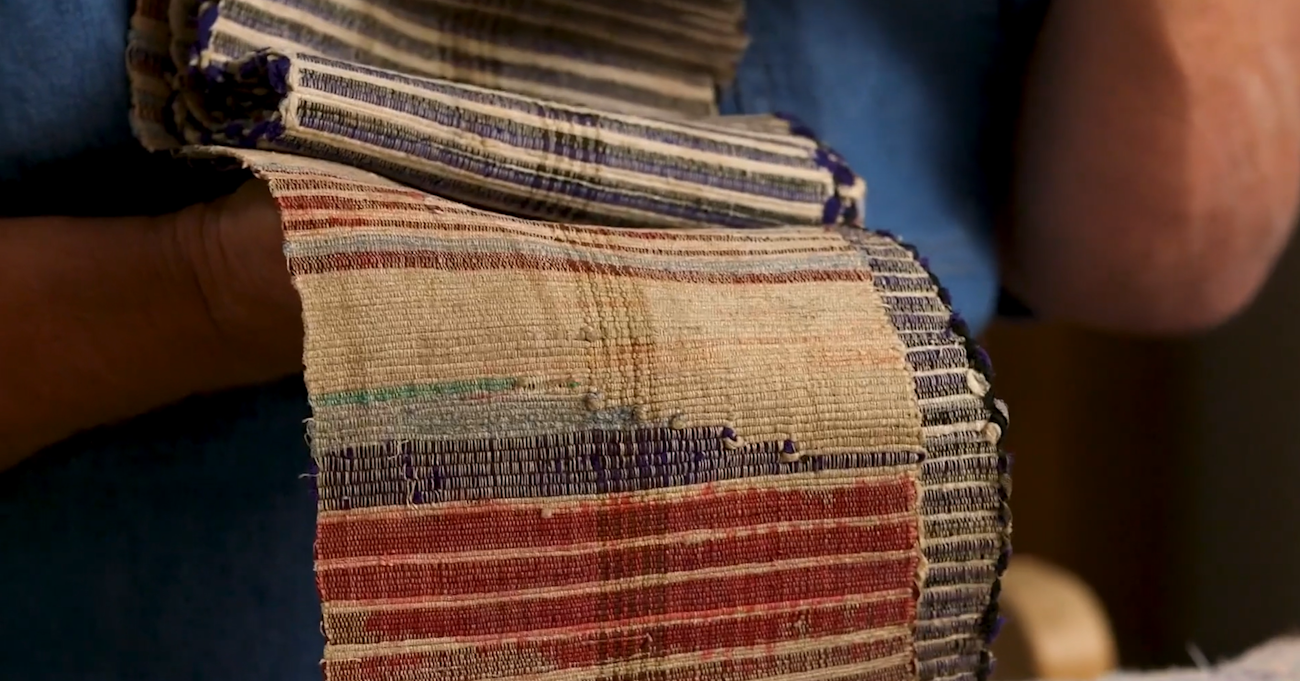In today’s craft scene, upcycling is a hot trend. But as Amanda Robinette points out in her book, Weaving Western Sakiori, upcycling cloth into sakiori (traditional Japanese rag weaving) could have been a matter of survival in medieval Japan. For today’s luckier weavers, Robinette’s well-thought-out book is a practical and inspiring introduction to this ancient Japanese art.
Not all technical weaving books make for a good read, but Robinette inspires with her own thoughts on the artistic and environmental benefits of rag weaving, followed by a history of sakiori in Japan. I was interested to learn that the art flowered during the Edo period (1600–1868 CE) when a government-sponsored shipping fleet began to bring bales of cotton rags to northern Japan, where cotton could not be grown.
Robinette’s research is excellent, and she supplements it with a number of historical and museum images, including several with jibata, the combination backstrap and treadle loom traditionally used in sakiori weaving.

Sakiori weaves rags into fabric meant for clothing, as shown in these samples from Tom Knisely’s collection. Photo by Long Thread Media
Planning and Weaving Tips
True to its title, the book is an excellent “modern guide for rag weaving.” Robinette has great tips on:
How to shop for rag-makings at thrift stores.
What kinds of garments and fabrics make good weaving rags.
Rag preparation using different tools, and techniques such as tearing and cutting.
Weft joins, beat, and use of temples.
Wet-finishing and drying techniques for rags of different fiber content.
A special section covers rag weaving on rigid-heddle looms. There are worksheets for project planning, including one for figuring how much rag weft you need, as well as a useful sett chart for weaving with different types of rags.
Weaving Projects
If the historical perspective doesn’t get you fired up for sakiori, the projects in this book certainly will.
Among them are many sweet scarves, plus myriad household items, baby blankets, shawls, and even an elegant evening purse.
Weave structures include plain weave, twills, and overshot.
Materials range from cotton to silk—and even include leather.
As Robinette points out, her project instructions are only a starting point because your rags will be unique. And therein lies the beauty and intrigue of sakiori.
Weaving Western Sakiori: A Modern Guide for Rag Weaving
By Amanda Robinette
Guilford, CT: Stackpole Books, 2018.
Softcover, 138 pages, $27.95. ISBN 978-0-8117-1609-3
This review was originally published in the March/April 2019 issue of Handwoven.

